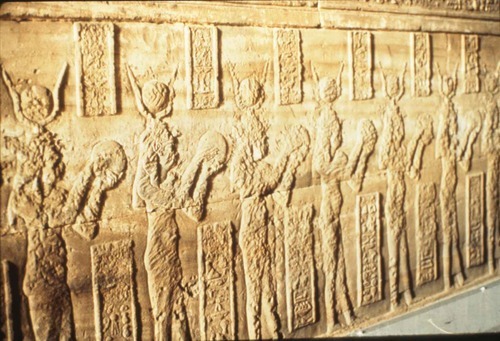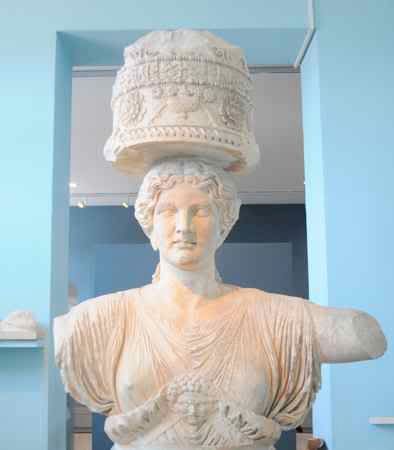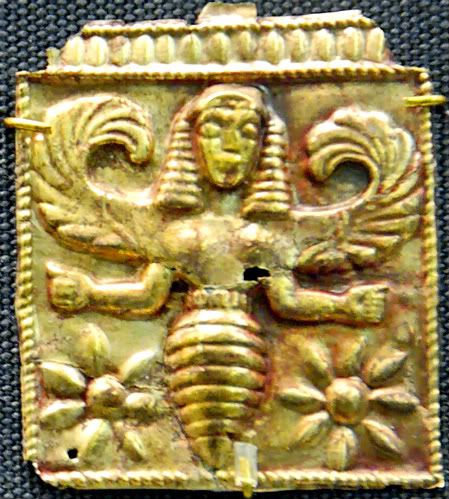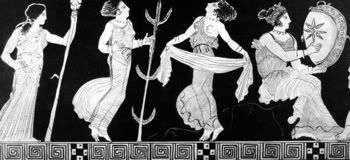http://rowecenter.org/events.php?event=18
Especially this quote:
"In the ancient Mediterranean world, the frame drum is associated with the Bee Priestesses, called the Melissa in Greek or the Deborahs in Hebrew. They served the Bee Goddesses: Aphrodite, Artemis, Cybele, Demeter, Persephone, Neith, and later the Virgin Mary. Many of the bee priestesses functioned as oracles, a highly valued and honored position. The drumming, humming, and breathing practices were traditionally used to develop the oracular aspect of the mind, along with healing physical and emotional imbalances."
It struck something in me. I really wanted to go and learn more about the Bee Priestesses! I loved the idea of serving the Bee Goddesses. But, alas, instead I had back surgery in September and there was no possibility of learning about buzzing techniques and learning to think mythically. Oh well.
I enjoyed the images on Layne Redmond's website, though. Her book and her work document and bring forward the ancient sacred practices from when women were the connection to spirit in the community; when they would use drums to enter a trance or creative state. She has found many images of women throughout history using the frame drum to create a sacred experience. I have cut and pasted some below.
http://www.layneredmond.com/Home.html
http://sacredpathofthebee.tumblr.com/

Procession of regional Goddesses playing frame drums at the Birthing Chapel at Hatnofer’s temple at Denderah.
(What? Goddesses playing frame drums at a Birthing Chapel? I want to know more!)
(What? Goddesses playing frame drums at a Birthing Chapel? I want to know more!)

Persephonie with the sacred Omphalos/Beehive/Seventh Chakra crowning her head. From the Archaeological Museum at Eleusis.
(A sacred beehive on her head? What? There is so much I don't know! But I love that these stone images are still here in our world.)

Bee-goddess, perhaps associated with Artemis. Gold plaques, 7th century BC. British Museum.
(Oooh Artemis, here you are again. One of the Bee Goddesses.)

A Melissa, an ancient bee priestess.
(I love this image. The way her head is bent in concentration or deference, her bare arms and the big round drum.)
Melissa is also the Latin name for Lemon Balm, one of my favorite plants I have growing in my garden. So I looked that up. And I came up with this. Who knew? No on else in the first page of my google search mentioned bee priestesses, but this guy.
http://www.herballegacy.com/Morrison_History.html
ANCIENT HISTORY OF LEMON BALM
To truly obtain a full understanding of lemon balm, within ancient historical context, we must look to the scientific name ‘Melissa officinalis’ for the beginning clues. The mystique that surrounds lemon balm is rich and spans thousands of years beginning in ancient Ephesus, known today as Turkey. It is here we begin to understand where lemon balm’s scientific name originates as well as its magical attributes and cherished healing powers.
“ In the Ephesian ceremonial the life of the bee was the model: the Great Goddess was the queen bee, the mother of her people, and her image was in outline not unlike the bee, with a grotesque mixture of the human form: her priestesses were called Melissai…” (1). Within ancient Greece religious doctrine, the Melissai priestesses served the Great Mother (Rhea or Cybele) or the Goddess of Earth and Nature such as Demeter, Persephone, and especially Artemis. The honeybee was considered to be a form the human soul took when descending from the Goddess Artemis herself. (2)
“It was only those souls who had lived a righteous life who were called Melissae, and afterwards they returned to heaven, just as the bee returned to her hive.” (3) Bees were not only important in the cosmology of ancient man but also in their commerce (honey, wax). Thus anything that helped to attract the valued honeybees to a hive, or keep the honeybees from swarming, gained in stature and usage to man as well. This is where lemon balm enters recorded history. Lemon balm was a sacred herb in the Temple of Artemis/Diana, and the herb that assisted the ancient beekeepers in keeping honeybees happy and well fed with nectar."
Ok, he calls the the great goddess grotesque but the rest of the information is very exciting!
More on bees later!




Grotesque is a technical term referring in this instance to the human-be hybridity, not meant as an aesthetic judgement.
ReplyDelete